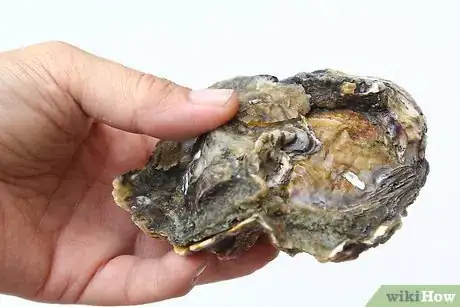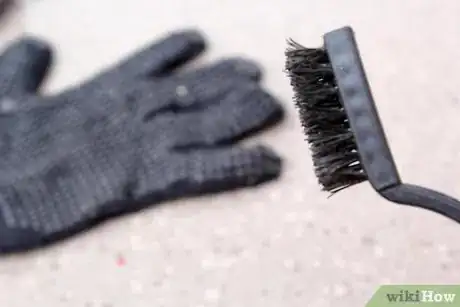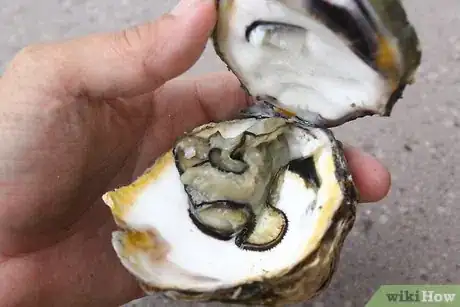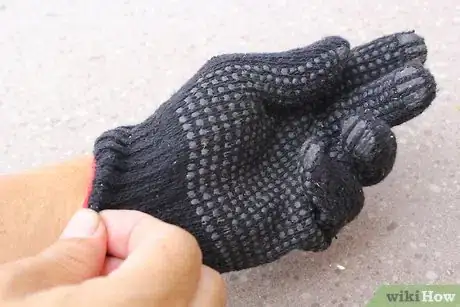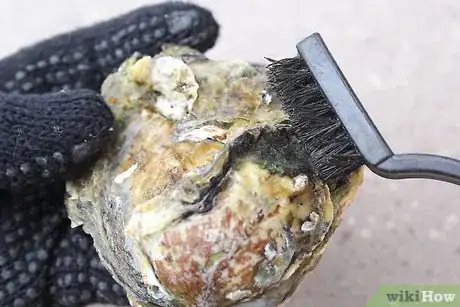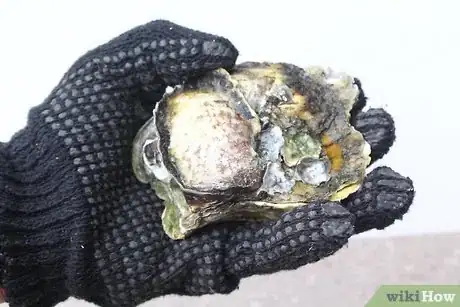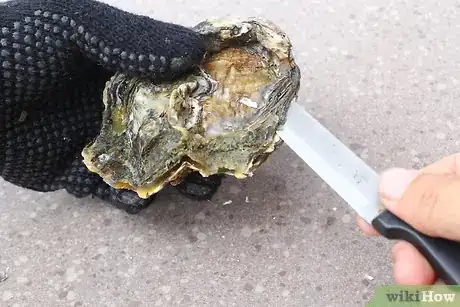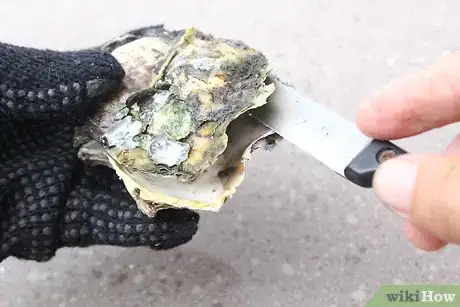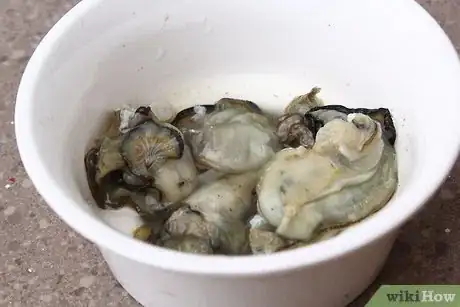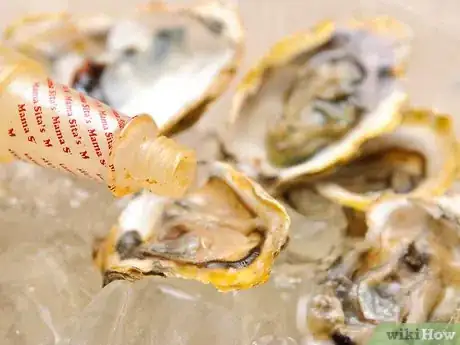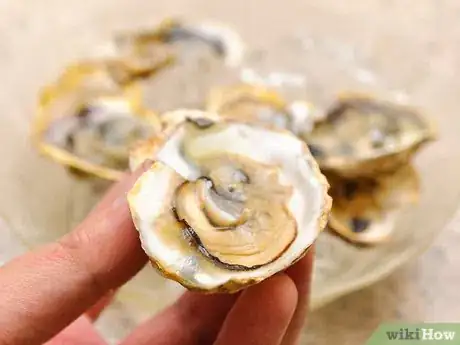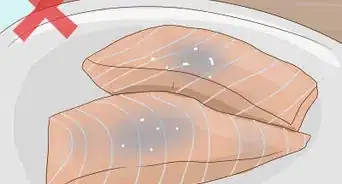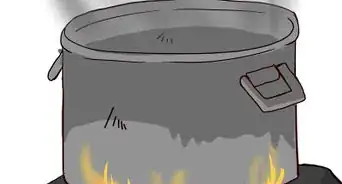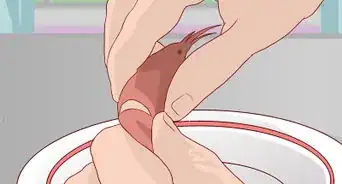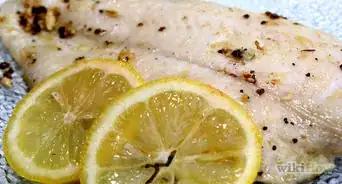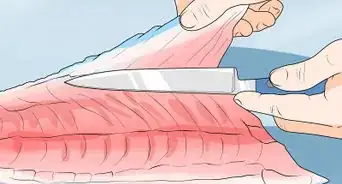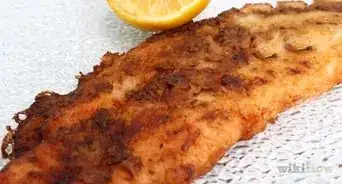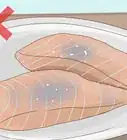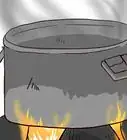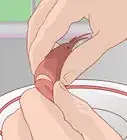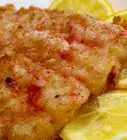This article was co-authored by Anne Lloyd. Chef Anne Lloyd is a Professional Chef and the Owner of Nolavore in New Orleans, Louisiana. Chef Anne has had a career in the restaurant and food service industries for over 30 years and has traveled and cooked on both coasts of the United States as well as in Europe and Southeast Asia. She specializes in utilizing local and regional foods to create dishes featuring international flavors. She also provides full-service catering, prepared foods, gourmet packaged goods, pantry items, and kids' cooking camps and classes for all ages. She received a BA in Anthropology from the University of California, Santa Cruz, and her Associate of Arts, Culinary Arts degree from the California Culinary Academy. Anne is an alumna of the Goldman Sachs 10,000 Small Businesses Summit.
wikiHow marks an article as reader-approved once it receives enough positive feedback. In this case, 100% of readers who voted found the article helpful, earning it our reader-approved status.
This article has been viewed 246,419 times.
Shucking oysters fresh oysters is the delicate process of entering the shell and removing the meat without losing the oyster's nectar, the delectable juice inside. Breaking into the tough shell to get to the succulent parts requires a firm hand and the right supplies. Learn how to choose oysters for shucking, the proper technique for shucking them, and how to slurp them when they're free from their shells.
Steps
Preparing to Shuck Oysters
-
1Choose fresh oysters. Oysters should still be alive when you shuck them; if they've already expired, they aren't safe to eat. Pick oysters with the following properties:[1]
- Closed shells. If an oyster's shell is open, it's likely that it's already dead and should be discarded. Lightly tap the shell, just in case; if it immediately shuts, the oyster is still alive and fine to eat.
- A fresh sea smell. Fresh oysters smell both sweet and salty, like the air next to the sea. If an oyster smells fishy or "off," it's probably not fresh.
- A heavy feel. Place the oyster in your palm. If has a nice heavy weight, that means it's still full of seawater and was probably harvested quite recently. If it's unexpectedly light, the seawater has dried up, and it's no longer fresh.
-
2Have the right supplies on hand. Besides a nice sack of fresh oysters, you'll need the following supplies:
- A stiff-bristed brush
- Heavy gloves
- An oyster knife, or another knife with a heavy blade that won't snap
- A bed of ice for keeping the oysters fresh until serving
Advertisement -
3Understand oyster anatomy. Before you start shucking, take a close look at an oyster so that you know the right way to handle it while shucking.[2]
- The hinge is the muscle that connects the top and bottom shells at the pointy end of the oyster.
- Opposite from the hinge is the rounded front of the oyster.
- The top of the oyster is the flatter shell.
- The bottom shell is cup-shaped.
Shucking Oysters
-
1Put on the gloves. Oyster shells are sharp, and you'll definitely cut yourself if you aren't wearing a pair of tough rubber or canvas gloves when you're shucking them. Don't forego this simple safety measure.
-
2Scrub the oysters clean. Use the stiff-bristled brush to scrub the ocean grit from the oysters.[3]
- Rinse the scrubbed oysters in cool running water.
- As you handle each one, make doubly sure the oysters are alive and fresh.
-
3Grasp an oyster in one hand, cup-side down. The curved side of the oyster should be against the palm of your hand. The point, or hinge, should be facing toward you.[4]
-
4Insert the oyster knife into the hinge. Point it down into the cup of the oyster. Use a twisting motion to separate the top and bottom shells. You should feel the hinge pop when you twist the knife.[5]
-
5Run the blade along the top of the shell. Work the blade as close to the top of the shell as possible, and run it from the hinge around to the other side of the oyster. Continue using a twisting motion to separate the top and bottom shells.[6]
- The shell will be very tightly closed, so be careful not to let the knife slip as you do this.
- Do your best not to break the shell into pieces. A few stray bits may get inside, but the shell should stay mostly intact.
- Don't tip the shell from side to side or turn it over, or the delicious juices inside will pour out.
-
6Open the oyster. When the top and bottom shells are separated, open the oyster, taking care to hold it level. Run the knife along the top shell to separate any remaining meat.[7]
- Check the oyster for shells or grit.
- If you wish, carefully separate the oyster meat from the bottom shell, so you or your guest won't have to do so before eating the oyster. Place it back in the bottom shell before serving.
-
7Serve the oysters. Place shucked oysters on a bed of ice, still swimming in their juices.
Slurping Oysters
Community Q&A
-
QuestionCan you serve them with salt and lime?
 MicheleTop AnswererYou can serve your oysters with anything you like. However, the classic way to eat raw oysters is with lemon and cocktail sauce, both on the side so guests can add as much or little as they want.
MicheleTop AnswererYou can serve your oysters with anything you like. However, the classic way to eat raw oysters is with lemon and cocktail sauce, both on the side so guests can add as much or little as they want. -
QuestionHow long can they stay on ice before being eaten?
 Community AnswerIf the shells are closed, they'll keep for a couple of days. If they are open, "on the half shell," eat them within a couple of hours.
Community AnswerIf the shells are closed, they'll keep for a couple of days. If they are open, "on the half shell," eat them within a couple of hours. -
QuestionCan you cook oysters without opening them?
 MicheleTop AnswererYes, you can, but unless you can see them open, it will be hard to tell when they're done. It's better to steam, grill roast or fry them. See How to Cook Oysters.
MicheleTop AnswererYes, you can, but unless you can see them open, it will be hard to tell when they're done. It's better to steam, grill roast or fry them. See How to Cook Oysters.
Warnings
- After sliding the knife into the oyster to open it, it is important to use the right angle, twisting motion, and a firm amount of force in order to open the oyster without damaging the meat.⧼thumbs_response⧽
- Do not use bare hands to hold the oyster. The ridges on the shell are sharp and opening many of them can take a toll on your hand.⧼thumbs_response⧽
Things You'll Need
- A stiff, bristle brush.
- Towel or heavy, protective glove.
- A good-quality, sharp knife (preferably an oyster knife).
References
- ↑ https://www.seriouseats.com/2010/07/knife-skills-how-to-shuck-an-oyster.html
- ↑ https://www.laylita.com/recipes/how-to-open-oysters/
- ↑ https://www.goodhousekeeping.com/food-recipes/cooking/tips/g1964/open-raw-oysters/?slide=1
- ↑ https://www.seriouseats.com/2010/07/knife-skills-how-to-shuck-an-oyster.html
- ↑ https://www.bbcgoodfood.com/videos/techniques/how-shuck-oyster
- ↑ https://www.seriouseats.com/2010/07/knife-skills-how-to-shuck-an-oyster.html
- ↑ https://www.seriouseats.com/2010/07/knife-skills-how-to-shuck-an-oyster.html
About This Article
Before you shuck oysters, check that the oysters’ shells are still closed and that they have a sweet, salty smell. Wear a pair of heavy gloves to keep from cutting yourself, and grab an oyster in one hand with the curved side down. Slide an oyster knife into the pointed hinge of the oyster and use a twisting motion to separate the top and bottom shells. Run the blade along the top of the shell and open the oyster, then separate the oyster from the bottom shell. Keep the oysters on a bed of ice until you are ready to serve them. If you want to learn how to eat oysters directly out of the shell, keep reading the article!
